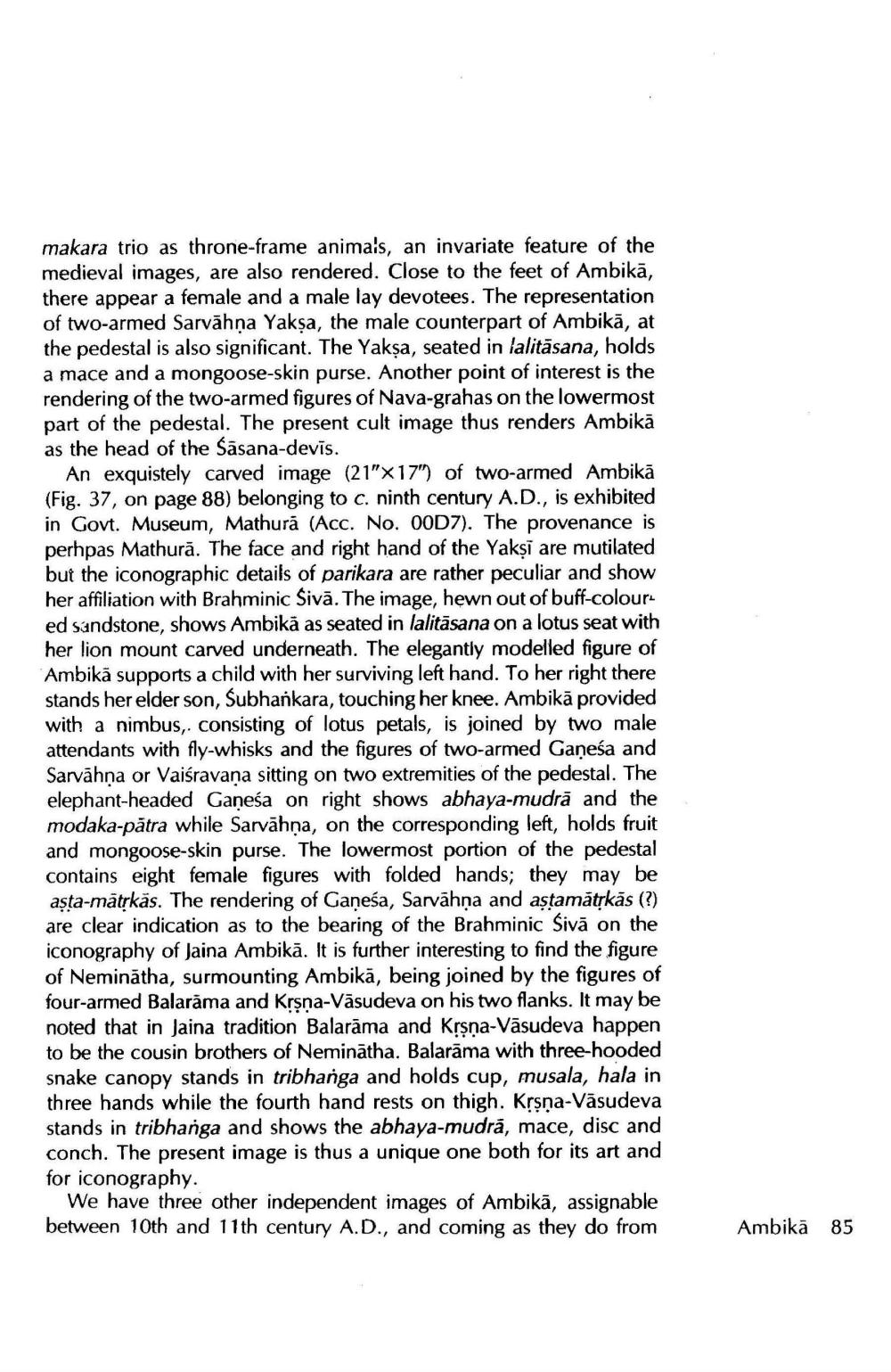________________
makara trio as throne-frame animals, an invariate feature of the medieval images, are also rendered. Close to the feet of Ambikā, there appear a female and a male lay devotees. The representation of two-armed Sarvāhna Yakşa, the male counterpart of Ambikā, at the pedestal is also significant. The Yaksa, seated in lalitāsana, holds a mace and a mongoose-skin purse. Another point of interest is the rendering of the two-armed figures of Nava-grahas on the lowermost part of the pedestal. The present cult image thus renders Ambikā as the head of the Sāsana-devis.
An exquistely carved image (21"X17") of two-armed Ambikā (Fig. 37, on page 88) belonging to c. ninth century A.D., is exhibited in Govt. Museum, Mathurā (Acc. No. OOD7). The provenance is perhpas Mathură. The face and right hand of the Yakși are mutilated but the iconographic details of parikara are rather peculiar and show her affiliation with Brahminic Sivā. The image, hewn out of buff-coloured sandstone, shows Ambikä as seated in lalitāsana on a lotus seat with her lion mount carved underneath. The elegantly modelled figure of Ambikā supports a child with her surviving left hand. To her right there stands her elder son, Subhankara, touching her knee. Ambikā provided with a nimbus, consisting of lotus petals, is joined by two male attendants with fly-whisks and the figures of two-armed Ganeśa and Sarvāhna or Vaiśravana sitting on two extremities of the pedestal. The elephant-headed Ganesa on right shows abhaya-mudrā and the modaka-pătra while Sarvāhna, on the corresponding left, holds fruit and mongoose-skin purse. The lowermost portion of the pedestal contains eight female figures with folded hands; they may be asta-matrkās. The rendering of Ganesa, Sarvahna and astamatkās (?) are clear indication as to the bearing of the Brahminic Śivā on the iconography of Jaina Ambikā. It is further interesting to find the figure of Neminātha, surmounting Ambikā, being joined by the figures of four-armed Balarama and Krşna-Vāsudeva on his two flanks. It may be noted that in Jaina tradition Balarama and Krsna-Vāsudeva happen to be the cousin brothers of Neminātha. Balarama with three-hooded snake canopy stands in tribhanga and holds cup, musala, hala in three hands while the fourth hand rests on thigh. Krsna-Vāsudeva stands in tribhanga and shows the abhaya-mudrā, mace, disc and conch. The present image is thus a unique one both for its art and for iconography.
We have three other independent images of Ambikā, assignable between 10th and 11th century A.D., and coming as they do from
Ambikā 85




